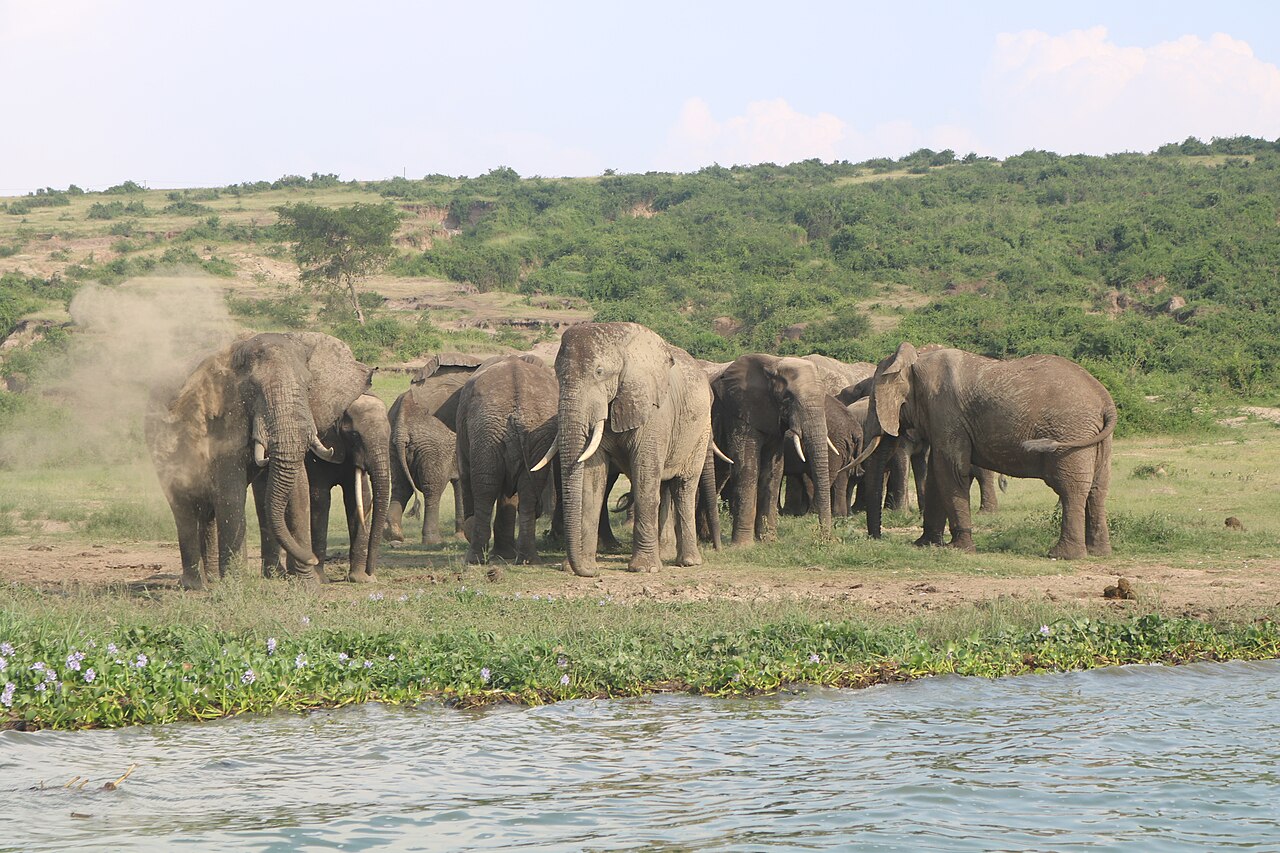Queen Elizabeth national park
Queen Elizabeth National Park: Uganda’s Most Diverse Wildlife Sanctuary
Queen Elizabeth National Park is Uganda’s most popular and biodiverse wildlife destination. Located in the western part of the country, this 1,978-square-kilometer park stretches from the foothills of the Rwenzori Mountains to the shores of Lake Edward, offering a wide variety of ecosystems, including savannahs, wetlands, lakes, and lush forests. Known for its incredible wildlife, picturesque landscapes, and rich cultural heritage, Queen Elizabeth National Park is a must-visit for travelers seeking an unforgettable safari experience in East Africa.
Wildlife in Queen Elizabeth National Park
One of the key attractions of Queen Elizabeth National Park is its abundance of wildlife. The park is home to over 95 mammal species and more than 600 bird species, making it one of the best places for game viewing and birdwatching in Africa.
- The Big Four: While Queen Elizabeth National Park is not known for rhinos, visitors can still see four of the famed “Big Five” animals—lions, leopards, elephants, and buffaloes. The park’s open savannahs make it relatively easy to spot these majestic creatures during game drives.
- Tree-Climbing Lions: One of the park’s most unique features is its population of tree-climbing lions, which can be found in the Ishasha sector. These lions are often seen lounging in fig trees, a behavior that is rarely observed in other parts of Africa.
- Hippos and Crocodiles: The park’s waterways, particularly along the Kazinga Channel, are teeming with hippos and crocodiles. Boat safaris along the channel offer visitors a chance to observe these large aquatic animals up close as they bask on the riverbanks or submerge themselves in the water.
- Primates: In the Kyambura Gorge, often referred to as the “Valley of Apes,” visitors can trek to see chimpanzees. This dramatic gorge, with its dense forest, is also home to other primates such as black-and-white colobus monkeys and olive baboons.
With such a variety of wildlife, Queen Elizabeth National Park is one of the most rewarding safari destinations in Uganda, offering something for every nature enthusiast.
Kazinga Channel: A Wildlife Hotspot
The Kazinga Channel is a natural waterway connecting Lake Edward and Lake George and is one of the most remarkable features of Queen Elizabeth National Park. The channel attracts a wide range of animals, making it a prime location for game viewing, especially during boat safaris. On these cruises, visitors can witness large pods of hippos wallowing in the water, while elephants, buffaloes, and antelopes come to drink along the shores. The channel is also a magnet for birdlife, with hundreds of bird species, including kingfishers, herons, pelicans, and fish eagles, frequently spotted here.
A boat safari on the Kazinga Channel is a highlight of any visit to Queen Elizabeth, offering an unmatched perspective of the park’s wildlife and landscapes.
Crater Lakes and the Maramagambo Forest
Queen Elizabeth National Park is dotted with scenic crater lakes, many of which are found along the Katwe Crater Lake Drive. These crater lakes were formed by volcanic activity and add to the park’s dramatic scenery. The Katwe Crater is famous for its centuries-old salt mining practices, where local communities harvest salt in traditional ways. Visitors can tour the salt pans and learn about the history and cultural significance of salt extraction in the region.
Another highlight is the Maramagambo Forest, located on the eastern side of the park. This lush tropical forest is home to various primates, including chimpanzees, as well as bats and an array of bird species. Visitors can explore the forest through guided nature walks, which offer an opportunity to see some of the park’s more elusive creatures and enjoy the tranquility of the forest environment.
The Ishasha Sector: Land of Tree-Climbing Lions
The Ishasha Sector, located in the southern part of Queen Elizabeth National Park, is renowned for its unique population of tree-climbing lions. While lions typically spend their time on the ground, the lions in Ishasha have developed a habit of climbing fig trees to escape the heat and biting insects. Spotting these lions perched high in the branches is a rare and thrilling sight for visitors.
In addition to the lions, Ishasha is home to a variety of other wildlife, including elephants, buffaloes, and large herds of Uganda kob. The sector’s remote location and open savannah landscapes make it an ideal destination for those looking for a more off-the-beaten-path safari experience within Queen Elizabeth National Park.
Birdwatching in Queen Elizabeth National Park
Queen Elizabeth is a birdwatcher’s paradise, with over 600 recorded species making it one of the most diverse birding areas in Africa. The park’s varied habitats, including savannah, wetlands, and forests, provide a haven for a wide range of birds. Notable species include the African fish eagle, papyrus gonolek, shoebill stork, and flamingos, which are often seen at the salt lakes.
The park is a prime location for both novice and expert birdwatchers, offering exceptional opportunities to see a wide variety of both resident and migratory species.
Cultural Experiences in Queen Elizabeth National Park
Beyond its wildlife, Queen Elizabeth offers visitors the chance to engage with the local communities and learn about their cultural heritage. Several villages around the park offer cultural tours where visitors can experience traditional music, dance, and storytelling. The Kikorongo Women’s Community is one such initiative, where women’s groups showcase local crafts, dance performances, and cooking demonstrations, providing a window into the lives of the people who live alongside the park’s wildlife.
These cultural interactions not only enrich the safari experience but also support the local economy, helping communities benefit from tourism in a sustainable way.
Conservation and Sustainability
Conservation is a key focus in Queen Elizabeth, with numerous efforts underway to protect its diverse ecosystems and wildlife. Anti-poaching measures, community conservation programs, and sustainable tourism initiatives all play a role in ensuring the long-term survival of the park’s unique wildlife. Tourism revenue from park entrance fees and activities like game drives and boat safaris is reinvested into conservation projects and community development, creating a positive cycle that benefits both wildlife and local people.
Best Time to Visit Queen Elizabeth National Park
The best time to visit Queen Elizabeth is during the dry seasons, which occur from June to August and December to February. During these months, the wildlife is easier to spot as animals congregate around water sources, and the park’s roads are more accessible. However, the park can be visited year-round, with each season offering its own unique advantages. The wet season brings lush green landscapes and vibrant birdlife, making it a great time for birdwatchers.
Conclusion
Queen Elizabeth National Park stands as a testament to Uganda’s incredible natural beauty and biodiversity. From the tree-climbing lions of Ishasha to the hippo-filled waters of the Kazinga Channel, the park offers an exceptional safari experience for wildlife lovers and adventure seekers. Whether you’re exploring the park’s savannahs, trekking through its forests, or cruising along its waterways, Queen Elizabeth National Park promises an unforgettable journey into the heart of East Africa’s wilderness.




Comments are closed